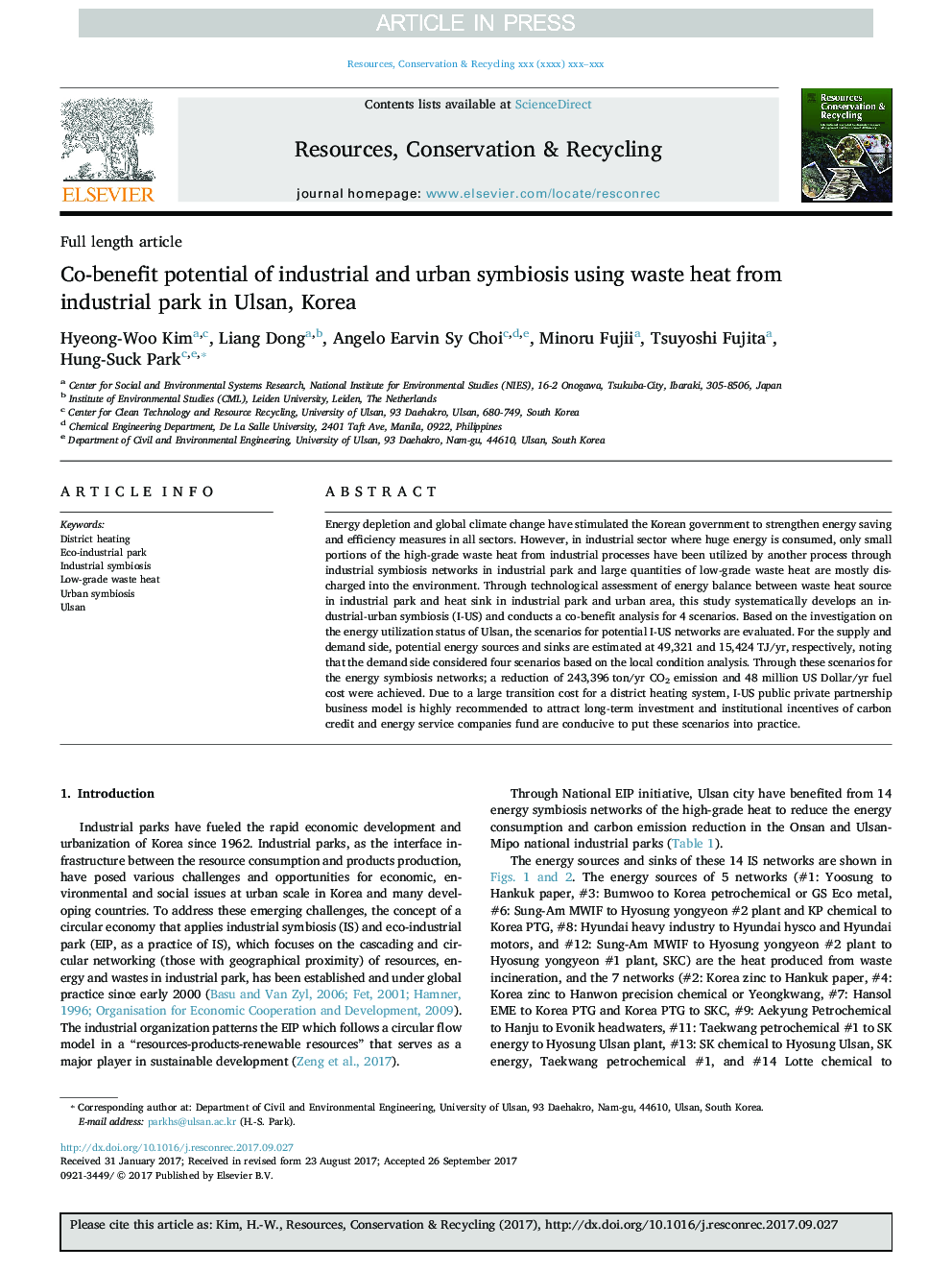| Article ID | Journal | Published Year | Pages | File Type |
|---|---|---|---|---|
| 7494045 | Resources, Conservation and Recycling | 2018 | 10 Pages |
Abstract
Energy depletion and global climate change have stimulated the Korean government to strengthen energy saving and efficiency measures in all sectors. However, in industrial sector where huge energy is consumed, only small portions of the high-grade waste heat from industrial processes have been utilized by another process through industrial symbiosis networks in industrial park and large quantities of low-grade waste heat are mostly discharged into the environment. Through technological assessment of energy balance between waste heat source in industrial park and heat sink in industrial park and urban area, this study systematically develops an industrial-urban symbiosis (I-US) and conducts a co-benefit analysis for 4 scenarios. Based on the investigation on the energy utilization status of Ulsan, the scenarios for potential I-US networks are evaluated. For the supply and demand side, potential energy sources and sinks are estimated at 49,321 and 15,424Â TJ/yr, respectively, noting that the demand side considered four scenarios based on the local condition analysis. Through these scenarios for the energy symbiosis networks; a reduction of 243,396Â ton/yr CO2 emission and 48 million US Dollar/yr fuel cost were achieved. Due to a large transition cost for a district heating system, I-US public private partnership business model is highly recommended to attract long-term investment and institutional incentives of carbon credit and energy service companies fund are conducive to put these scenarios into practice.
Keywords
Related Topics
Physical Sciences and Engineering
Energy
Renewable Energy, Sustainability and the Environment
Authors
Hyeong-Woo Kim, Liang Dong, Angelo Earvin Sy Choi, Minoru Fujii, Tsuyoshi Fujita, Hung-Suck Park,
